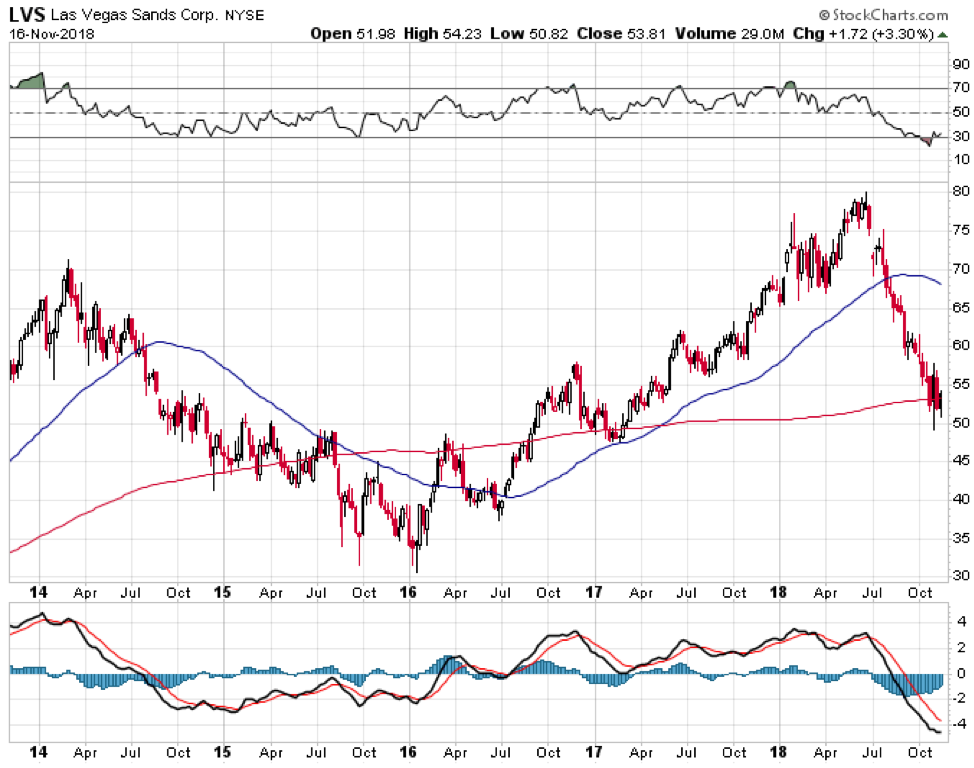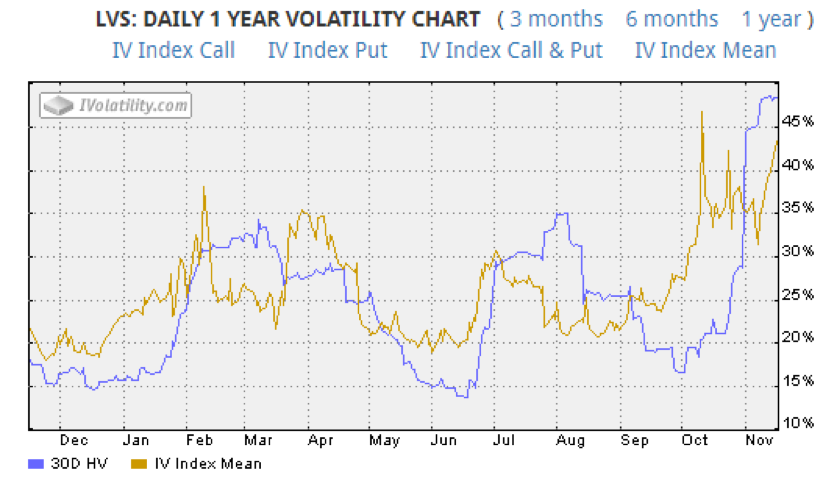Markets have been in correction mode since mid-October, but one stock has been struggling since well before then: Las Vegas Sands (NYSE: LVS).
The stock was down as much as 40% since topping out in June. Since that top, it’s been pretty much a straight shot lower with very little respite. That means one thing – volatility!
When the stock was hitting new highs back in June, volatility was bottoming out around 20% but has since exploded to sit around 45% currently.
That spells opportunity to me, especially when the IV rank is sitting at 100. High volatility such as this provides huge opportunity for option traders.
One way to take advantage of high volatility such as this is via a delta neutral option strategyknown as a short straddle.
As a reminder, a short strangle consists of a short put and a short call placed at-of-the-money. The thesis of the trade is that the stock will remain near the strike price for the duration of the trade and the trader will be able to close the trade for a profit thanks to time decay.
However, sometimes things do not go to plan. If the stock makes a large move in either direction, the short straddle comes under pressure.
One way to handle this is by delta hedging the exposure as the stock moves.
I talk about that in this articlewhich includes a couple of examples.
For LVS, the $55 Jan 2019 short straddle can be sold for around $7.85 which would put the breakeven points at $47.15 and $62.85 which is a pretty wide range.
Most traders start to take profits on a short straddle at around 30% of the premium received.
SUMMARY
In summary, short straddles are a popular trade to take advantage of high volatility. Hedging with the underlying stock can minimize the delta risk as the stock moves. Remember that short straddles involve naked options and are not suitable for everyone.
What do you think about this trading strategy, let me know in the comments if you’ve tried short straddles in the past.
Trade safe.
Twitter: @OptiontradinIQ
The author does not have a position in mentioned securities at the time of publication. Any opinions expressed herein are solely those of the author, and do not in any way represent the views or opinions of any other person or entity.










